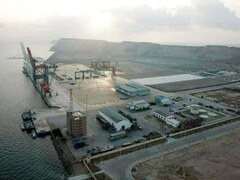The pharmaceutical industry in Pakistan, during the last fifteen years, has been marred by regulations. Government intervention, price ceilings, stay orders, red tape and numerous other issues have pinned down companies who wanted to grow and after years of struggle have gotten tired especially the multi-national companies. The 1976 Drugs Act which empowers the government to control and set drug prices has been a major bone of contention between the Pakistan Pharmaceutical Manufacturing Association (PPMA) and Drug Regulatory Authority of Pakistan (DRAP).
MNC pharmaceuticals have re-considered their operations in Pakistan because their profits have been going downhill as they need to add-in research costs and royalty fees as well. The price mechanism set by the government since 2011 has not allowed them to increase prices of even those drugs whose costs have gone up by more than 100 percent.
There were 35 MNCs working in Pakistan in early 2000s in this sector and now that number has gone down to about 21. That is an eye opening number of exits.
Those MNCs which have survived and have done well, for example GSK and Abbott have been relying on their consumer healthcare portfolios for bottom line growth. There is stringent government regulation on these healthcare products and companies have been able to raise prices with time.
However, the local pharmaceutical companies who control about two-third of the USD 2.7bn market have taken full advantage of the volumetric growth due to local demand and the exit of MNCs. According to Alfalah Securities research, the difference between revenue and gross margin growth of listed local companies versus the MNCs is 5 percent and 10 percent respectively.
Apart from domestic sales, the local companies have ramped up export sales over the years which are expected to cross the USD 200mn mark in the next two years. There are over a dozen under construction plants in Pakistan which will apply for a FDA license in the future. According to industry leaders, the potential for pharmaceutical exports is very high and all they require from the government is to expedite drug registration requests and various approvals required for export.
The success of local pharmaceutical companies has also meant that they are sitting on excess cash and are eyeing expansion in the short term. They are looking to acquire MNCs who wish to exit and there are a few chirps in the market that Pfizer and Wyeth are on sale.
These companies have caught the eye of local players such as Getz and ICI. The next 5 years can be golden for local companies if they are able to expand their footprint while maintaining quality. The platform has been set.
BR100
7,874
Increased By
36.2 (0.46%)
BR30
25,599
Increased By
139.8 (0.55%)
KSE100
75,342
Increased By
411.7 (0.55%)
KSE30
24,214
Increased By
68.6 (0.28%)





















Comments
Comments are closed.